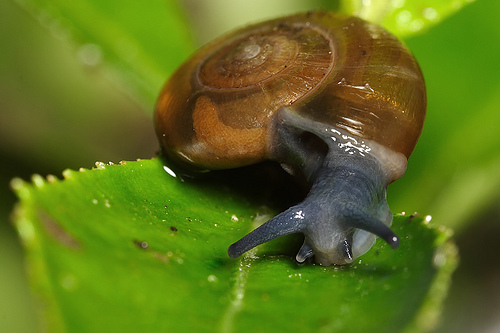Adaptation
Members of the subclass Pulmonata
aren't like other gastropods who acquire oxygen through the use
of gills, they have one outstanding adaptation that sets them
apart.
The word "Pulmonata" comes from the Latin
word "pulmo", meaning lung. Yes, that's right, these
snails breathe with a lung. Their "lung" is not as
complex as those of the vertebrates, however. It is in fact a
sac-like cavity that is richly supplied with blood vessels,
therefore it is usually referred to as a pulmonary cavity or a
pulmonary sac. It is found in the anterior portion of the
shell and is connected to the outside by a pneumostome, or
respiratory opening near the head of the animal.
The circulatory system of a Ramshorn snail consists of a two-chambered heart, an open circulatory system and hemolymph. Hemolymph is the transport fluid in the circulatory system, and it is composed of intestinal fluid and blood. Hemolymph also contains hemocytes, which act as "house keepers" in the organism. The heart is enclosed in a cavity called the pericardium. In an open circulatory system, the blood is not confined to vessels, but flows through tissues via various channels and sinuses instead, essentially bathing the tissues. It returns to the heart via the pulmonary vein.
As stated earlier in the habitat portion of my web page, Pulmonates such as the Ramshorn snail are very well adapted to less stable environments. These organisms have the ability to hibernate, or enter a dormant state during periods of cold. They can also adapt during periods of drought. This is called Aestivation. The snail creates a plug of hardened mucus, called an epiphragm, which it then uses to seal off the mouth, because Pulmonates lack an operculum.
